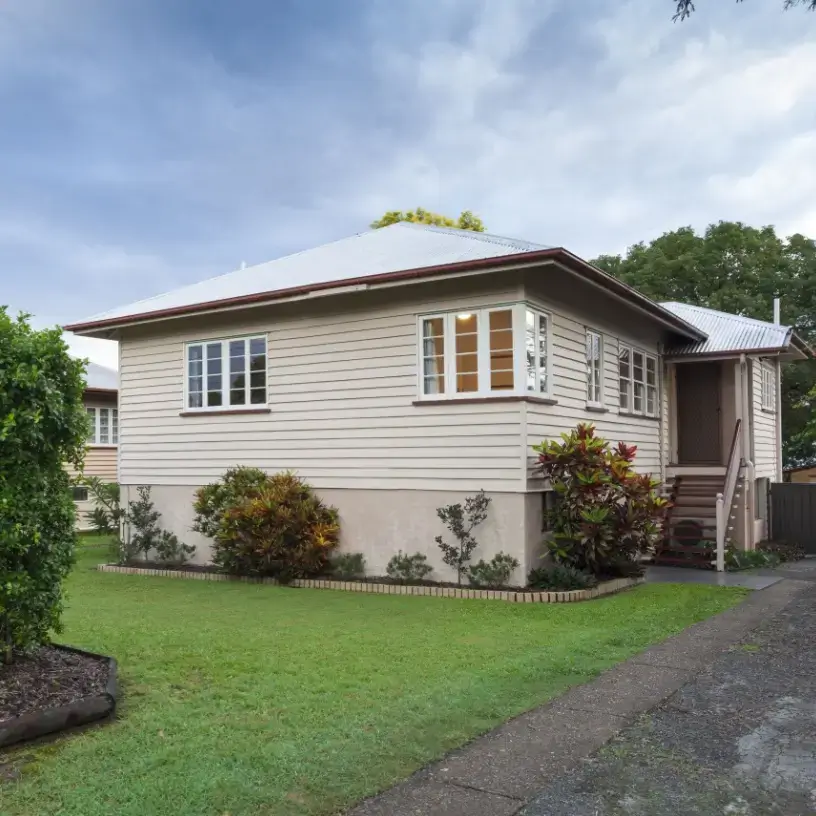Home / Compare Home And Content… / Home and contents insura…

Key takeaways
A home and contents policy could safeguard your house and possessions from the financial impact of different scenarios. However, you may find that home and contents insurance exclusions and restrictions come into play when you buy your policy in Australia. Here are some things to consider:
- Every home and contents insurance policy has exclusions, which may vary depending on the insurer.
- Claims due to illegal activities won’t be covered by any home and contents policy.
- Underinsurance is when your claim costs more than the amount of cover you have for that event.
Insurance exclusions tips from our home and contents insurance expert, Adrian Taylor
As Compare the Market’s home and contents insurance expert, Adrian Taylor has the following tips for understanding and avoiding potential exclusions:

Always review the PDS before you buy a policy
When comparing home and contents insurance through Compare the Market, you can view the full Product Disclosure Statement (PDS) of any available policy before making a purchasing decision.
Report any crime-related event to the police
Some providers may not cover theft unless you’ve reported it to the police and have an incident report.
Inform your provider of changes to your living situation
Inform your insurance provider as soon as possible of any changes to your home or living situation. This may include holidays, planned renovations or updating your sum insured amount.
What isn’t covered by home insurance?
All policies have limitations and exclusions so it’s important to read the relevant PDS before purchasing a policy, so you can see the full details of what is and isn’t covered. It’s also worth reading the insurer’s Target Market Determination (TMD) to help you choose the right policy for you.
Below are some common home insurance and contents insurance exclusions you might come across when you’re searching for a policy.
General home and contents insurance exclusions

- Failure to disclose. Policyholders who withhold information about known issues with their home building or contents may find they aren’t covered for related claims. Insurance providers may investigate claims as part of the claims process, so it’s always best to be honest.
- Events that occur during waiting periods or embargoes. When you first take out a home and contents insurance policy, there may be embargoes or waiting periods where you cannot claim for certain insured events (also known as defined events). For example, you might not be covered for bushfires or floods for a certain time period from your policy’s commencement date.
- Existing damage. If your house has pre-existing damage, which can range from mouldy ceilings and a leaky roof to serious structural defects, you usually can’t make a claim to fix it.
- Not securing your home properly. If your home isn’t secure or you haven’t taken reasonable steps to secure it from a break-in, you risk your provider rejecting your claim.
- Leaving your property uninhabited for an extended period. Some insurance providers won’t cover the home if it’s unoccupied for more than 60 consecutive days, whereas others may have a 90-day or more time frame. The definition of ‘unoccupied’ can also vary between insurance providers, so it’s important to read your PDS. If your home will be unoccupied for a month or more, it’s best to tell your provider in advance. Otherwise, you might find that theft, vandalism, malicious damage and other events aren’t covered.
Uninsured events
- Uninsured flood damage. If you live in a low-lying area or near a body of water, it may be suitable to include flood cover. This may come at an additional premium, as it’s often a type of optional cover not included as standard. Otherwise, you could face the unfortunate prospect of paying for flood damages yourself.
- Storm damage clean-up. As surprising as it may seem, not all providers cover a storm-related clean-up. For example, the cost of removing fallen trees or debris in your yard from a storm may not be included in your policy. However, you will be covered for repair and rebuilding costs for storm damages that affect your home or contents.
- Actions of the sea. Water damage caused by things like tsunamis and storm surges will likely be excluded from your cover.
- Nuclear material and contamination. Most policies don’t cover any damage to your home or possessions caused by nuclear material or nuclear contamination.
- Acts of war, hostility or rebellion. These are considered unavoidable circumstances (or ‘force majeure’) and aren‘t generally covered by home or contents insurance. Likewise, events involving civil commotion and armed conflict (such as riots) are typically excluded from cover.
- Uninsured accidental damage. Many insurance providers don’t cover loss or damages from mishaps (e.g. someone bumps the television over) unless you’ve purchased accidental damage cover. Your premiums may not include accidental breakage, but most providers offer this as an additional extra (and some offer it as standard).
Pet and wild animal damages
- Pet damage. While some insurance providers may cover damage from pets, many don’t accept insurance claims caused by our furry friends.
- Animal damage. Any animal from a small insect to a feral pig can potentially inflict damage on a property. However, damage from insects, rodents, vermin and other wild animals may not be covered by your policy.
Renovations and general maintenance
- Renovations. While your policy may have specific renovation-related clauses, some providers may not cover you if you’re renovating your house. If you can’t find a home insurance policy that covers your refurbishment, you might need to find a separate policy entirely.
- Tree lopping. Many home insurance policies won’t cover damage from trees that are lopped or pruned, whether it’s by you or a hired professional. Any damage caused by tree roots, plants, shrubs and hedges may also be excluded from home and contents policies.
- Defective workmanship. While your home and contents insurance policy may cover the cost of injuries to residents and visiting guests under legal liability, the cost of repairing and fixing any defective work usually is not.
- General wear and tear. Damages caused by a gradual deterioration, or a lack of maintenance aren’t insured. For example, if you have corroded water pipes that leak throughout your house, it wouldn’t be covered by home and contents insurance. Mould and rust are also typically excluded.
Business activities
- Business activity. If you conduct any business activity from home, you’ll need to notify your home and contents provider to ensure that they can still cover you.
- Home swapping or having someone stay at your place. Holiday houses or private rentals like Airbnb are great ways to generate additional income. However, any damage to your house caused by invited guests might not be covered by your home and contents policy. Holiday letting platforms like Airbnb may provide some insurance cover for this.
Illegal activities
- Illegal activity. Any illegal act or activity which damages the home or contents at your insured address will not be covered by your insurance provider.
- Lawful confiscation. If the police or other government body seize your belongings with the use of a search warrant, your home insurance won’t cover the cost of replacing them.
- Fraudulent claims. Any deliberate act or intentional damage to your property done by yourself won’t be covered. This is known as insurance fraud and is a crime.
Known events and underinsurance
Will I be covered if a natural disaster happens just before I purchase home insurance?
 If you’re about to purchase a new policy and a bushfire, flood, cyclone or other disaster happens before you purchased the policy, any damages related to this event wouldn’t be covered.
If you’re about to purchase a new policy and a bushfire, flood, cyclone or other disaster happens before you purchased the policy, any damages related to this event wouldn’t be covered.
Almost all home and contents insurance policies have a waiting period on certain defined events from the commencement date of your policy. Known events specified in your policy’s embargo (typically natural disasters) may not be covered until a set time after your policy first takes effect.
What if the repair costs exceed the value listed in my policy?
If the cost to rebuild, repair or replace your home or the contents within it exceeds the sum insured on your policy (i.e. the specified monetary amount you’re covered for), you will likely have to pay any extra costs out of your pocket. This is known as underinsurance.
To avoid underinsurance, it’s essential that you ensure the replacement value for your contents and the sum insured for your home’s structure would adequately cover the cost of completely rebuilding the home or replacing your contents. You may wish to update the sum insured regularly to ensure you’re never out of pocket.
Some insurers may also offer an optional extra called sum insured safeguard cover, otherwise known as an ‘underinsurance safety net’ or ‘sum insured cover’. With sum insured safeguard cover, if the cost to replace or repair the damage to your home exceeds your sum insured, your insurer will increase your sum insured by a nominated percentage. This percentage may be up to 25-30%.
However, some underinsurance scenarios can be out of your control, like the rising costs for rebuilding. Some trades will raise their rates following a major weather event due to the demand. To plan for this, some insurers may offer ‘total replacement cover’, where policies agree to cover the cost to repair or rebuild rather than paying up to an agreed sum insured. Just keep in mind that this tends to be a more expensive option.
Optional extras
Are portable contents covered if I take them out of the house?
It depends on whether you have portable contents cover in your policy. Insurers may include unlisted (or unspecified) cover as a standard inclusion on a home and contents policy up to a specified limit per item and/or group limit. However, listed (or specified) cover generally won’t be a standard inclusion, but could be added for an additional premium.
Unlisted portable contents cover will provide coverage by way of a total sum insured for all portable items claimed over one event as opposed to itemising each belonging individually as you would for listed items. Listed cover, on the other hand, allows certain items to be detailed to their full value or cost of repair or replacement. This will typically be reserved for valuable items such as mountain bikes, laptops, mobile phones and jewellery.
Are electrical motors in the house insured?
Appliances damaged by a power surge and burnout can be covered by motor burnout cover. This benefit is usually only available as an optional extra that you can add to your home insurance or contents insurance cover, depending on what you‘re looking to insure.
For example, a wall-mounted air-conditioner would be considered a fixture of the house and would be covered by home insurance, whereas a washing machine or clothes drier you bring into the home falls under contents insurance.
Meet our home and contents expert, Adrian Taylor
As a General Insurance expert with over 13 years’ experience in financial services, Adrian Taylor works to make it easier for homeowners, renters and landlords to protect their home and contents. He believes it’s important for all residents (whether they rent, own or lease) to have adequate financial cover for their property and belongings in case the worse should happen.


